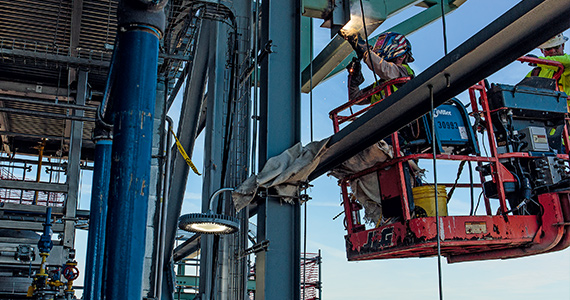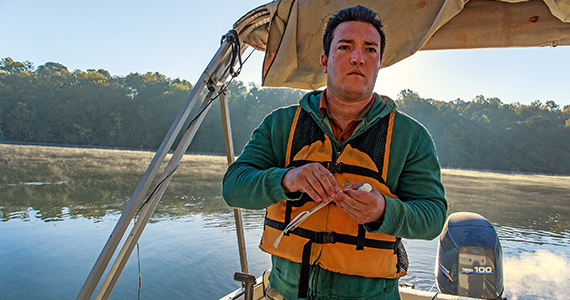It is barely after noon and the water is already up to the necks of Derwood Arsement and Kyle David. The two Clariant employees, along with a few others, are strapped into a helicopter cabin that is lowered into a swimming pool via a remote-controlled mechanism, until the water reaches the collar of their overalls, and even their heads. It seems as exciting as a movie, except that they are now a part of it themselves.
A moment later, on command, the cabin is tilted with a jerk and at the same time sinks lower. Now everyone must work as quickly as possible to free themselves: out of their seats, through a removable window and into the water. Seconds later, they all emerge, swim to the edge of the pool and hear the rough voice of the trainer while they climb out: »Not bad, guys. Let’s do it again.«
And then again and again. You need to have reasonably good nerves for this procedure in pool 1 of the Maritime Survival Training Center (MSTC), a facility in the immediate vicinity of the Lafayette airport in Louisiana. The »Helicopter Underwater Egress Training« (HUET) is an integral part of a course for people who work offshore such as on floating oil platforms, like Arsement and David, two account managers in the Business Unit Oil & Mining Services in the Gulf of Mexico.
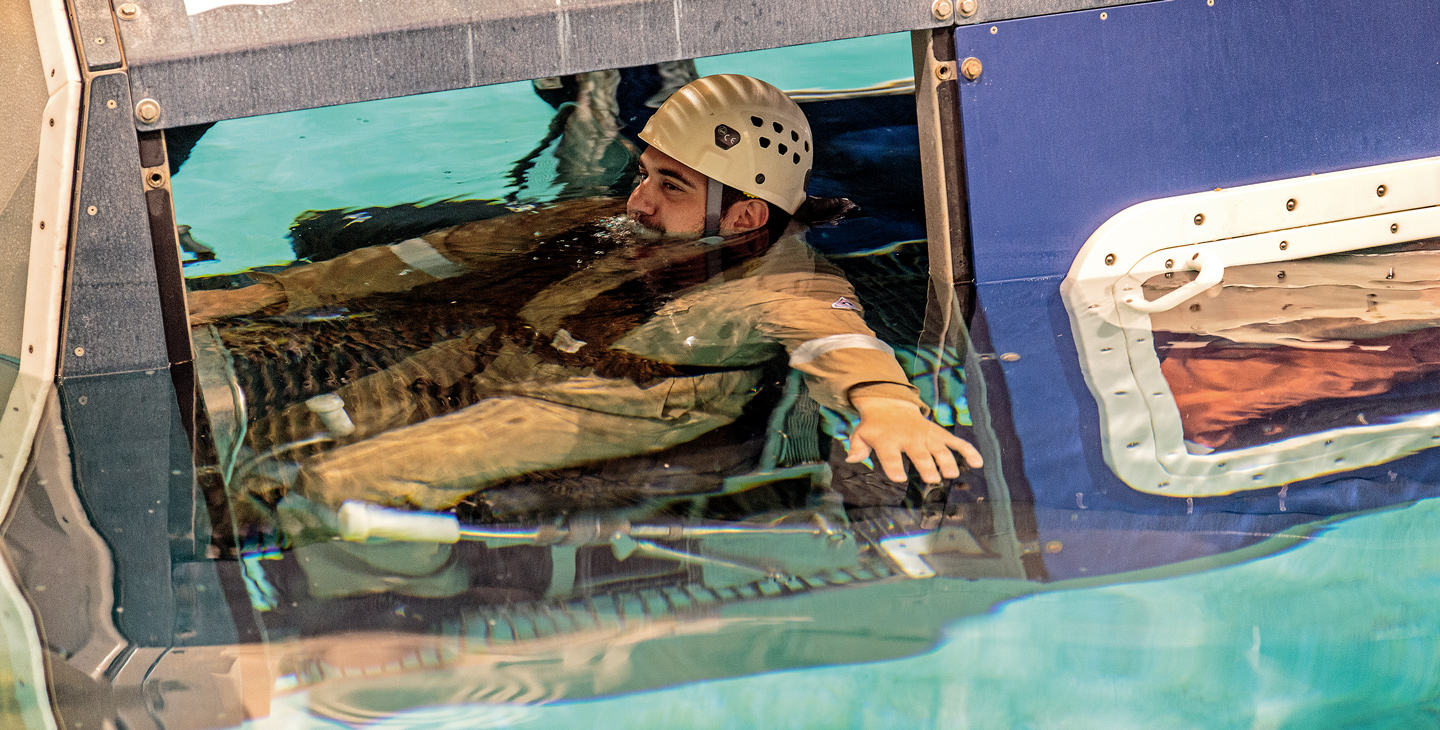
»The regular training gives you an extra sense of security.«
All day long, both employees were made familiar with precautions and emergency measures on the high seas at the MSTC, an institute of the University of Louisiana. The course starts at eight in the morning with presentations and written tests and ends, if successful, with the presentation of a certificate. However, in the middle of all of this coursework are these two to three hours in the pool in which the participants are prepared for the »worst case« scenario. What do you do if the helicopter lands in the ocean instead of on the platform?
Just now, the group practiced how best to throw oneself into a life raft or, if one is not available, how to form a circle on the high seas to stay together, and how to rescue someone who is injured or unconscious. That was pure group dynamics, which are a good way to get to know each other. But in HUET, it is everyone for themselves. It’s all about not reacting in a panic. The only thing that helps is if you have already completed the course like the two Clariant employees already have.
He is fortunate to never have had to use it, says Kyle David, a sturdy 30-year-old man. Nevertheless, it gives you an extra sense of security, a confidence boost, when you complete the training regularly. Arsement, the bigger of the two and three years older, agrees unreservedly: »You feel a little safer.«
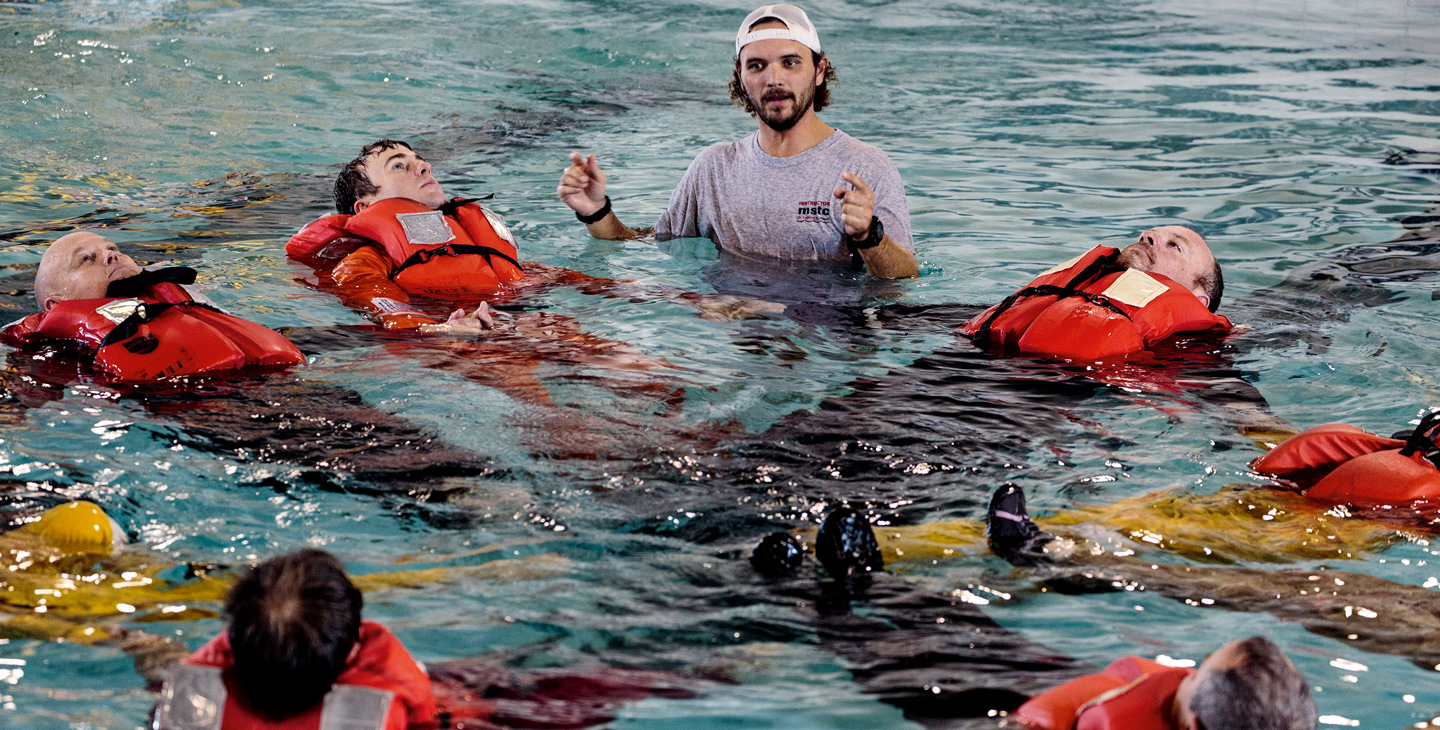
Albert Crownover likes to hear these kinds of statements. The MSTC president lets the group repeat the quick escape from the helicopter a total of six or seven times per group. The fatigue is evident in all the students at the end. Only then is Crownover certain that they take away enough from this exercise to react appropriately in case of emergency.
»We can help if someone panics,« he says with a gentle smile of an expert, »this is not like in the army, where people are being yelled at.« As a result, there are hardly any participants who do not complete the one to two-day courses successfully. Only in extreme cases, when simply nothing would help, someone would have to look for another job, unfortunately.
A certain level must be met if you want to be safe. This is the guiding principle in the training center, which was founded on the initiative of a lecturer for occupational safety in 1987. The facility, which was also financed by donations from the oil industry, is now worth over a million dollars, estimates Crownover. Today, the center employs nearly a dozen people, all employees of the university. This is the only way to guarantee that the requirements of the Offshore Petroleum Industry Training Organization (OPITO) – a global consortium founded by the industry – are met.
Under its umbrella, advanced education and safety training can be established with uniform standards and structures to build a sustainable, competent workforce to work in the oil and gas industry. In this way, it should be ensured »that quality, innovation and partnership underscore everything that we do.« Each year, more than 250 000 participants at more than 150 locations around the world take part in the certified courses – in Lafayette, the capital of the »Cajun Country« on the Vermillion River, or elsewhere.
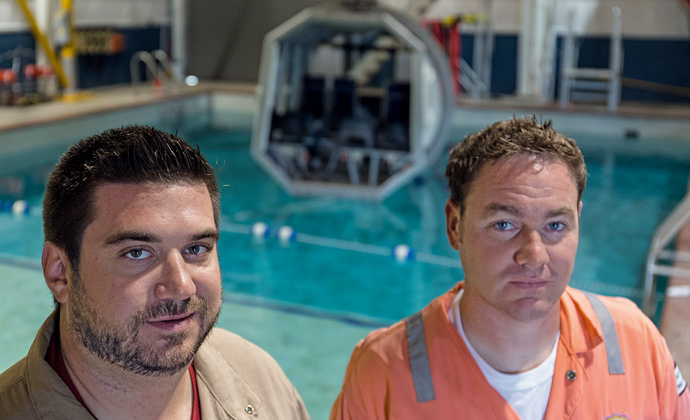

These include Arsement and David as well as all others who work for Clariant in the Business Unit Oil & Mining Services in the Gulf of Mexico. At least every three or four years, they are prepared to withstand storms and water once again in one of the training centers – regardless of whether they are used on the platform for weeks or just for a day or two as a technician or consultant. After all, the »safety and security of worldwide activities« are among the most urgent objectives, as was bindingly established in 2013 in the Clariant Sustainability Policy.
The ambitious principle has become standard on several levels: overall in the security concept AvoidingAccidents, as well as specifically for the volatile working environment of oil exploration and mining in »Safety Affects Everyone« (SAfE), which provides clear rules of conduct for all employees. This is based on two guiding beliefs: »All accidents and occupational illnesses can be avoided« and »Safety is everyone’s responsibility.«
This safety culture and the continuous reduction of accidents and occupational illnesses is implemented in Clariant’s extensive Environmental Safety and Health Affairs (ESHA) program. »Never before has such content been so unreservedly supported at a management level,« assures Mike Teague, Head of Regional Sustainability & Regulatory Affairs North America. This reflects a clearly positive trend in the growth and maturity of our safety culture.
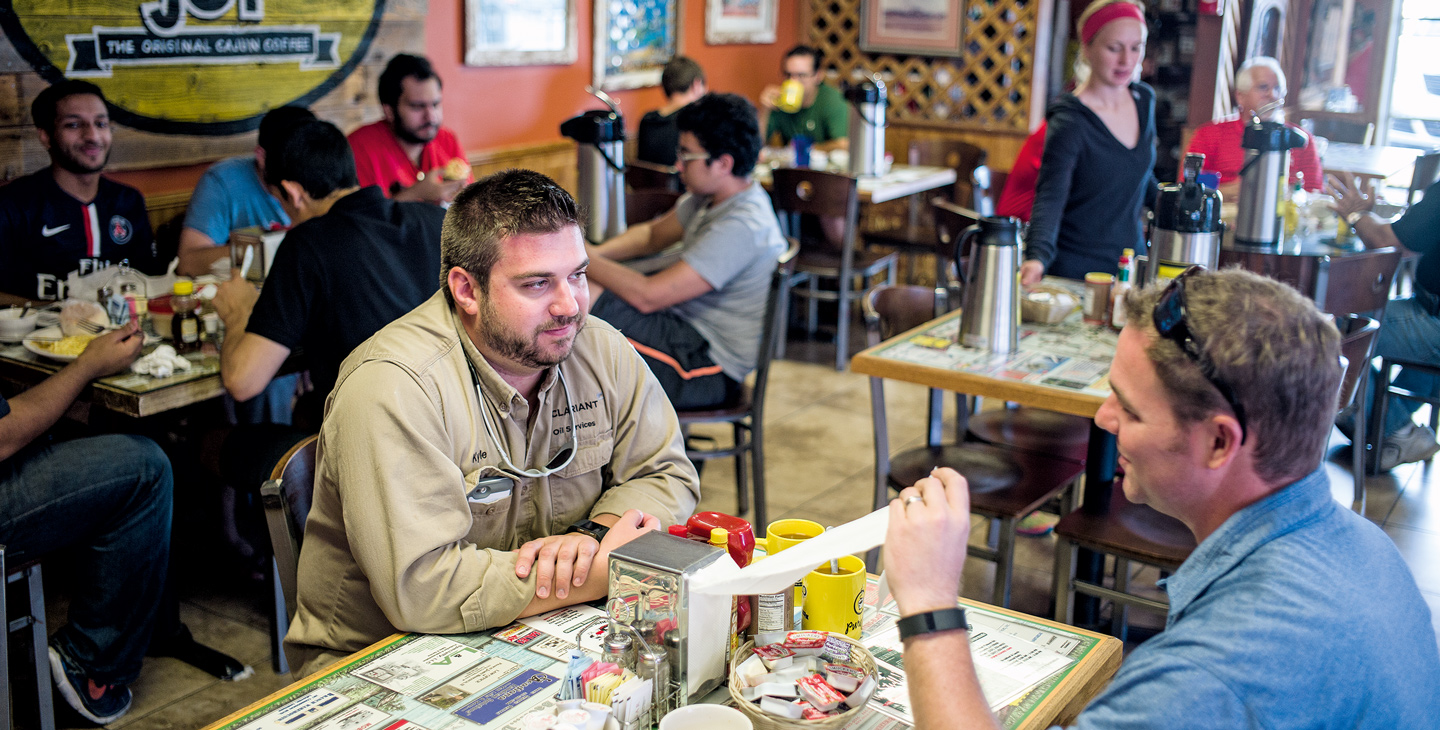
»We are constantly looking for new ideas in order to reduce the number of accidents at work further.«
Especially in the last ten or more years, according to Teague, »very good results« in reducing accidents at work have been able to be recorded. Nevertheless, there is no reason for euphoria, because »we are not at zero.« Still, there are many opportunities to share concepts and procedures among the experts from different companies: »We are constantly looking for new ideas, both internally and externally, in order to reduce the numbers further.«
Do not slack off, never be inattentive: Derwood Arsement and Kyle David also heard this frequently at the MSCT in Lafayette. The two customer advisors have mastered the practical training as well as the theory at the end of the course. Like all the other participants, they have received the certificate with Albert Crownover’s signature and can venture out by helicopter again in the future. Out to where they are needed.
Each of them probably assumes that they will never have to use the material they have learned, says Arsement, hair still wet before saying goodbye, »but you feel prepared.« This is what someone sounds like who has been through it all.

